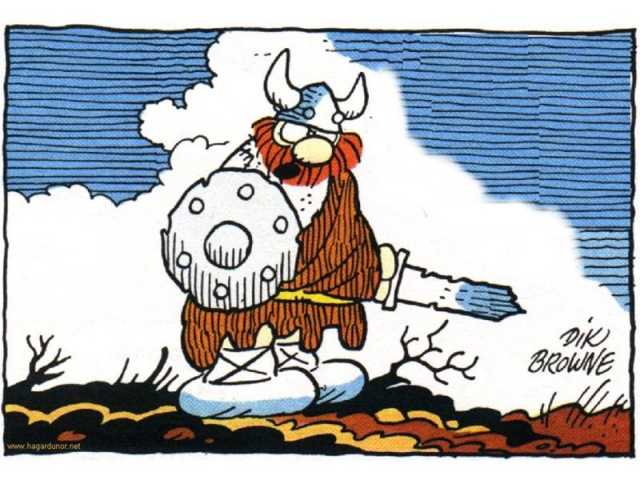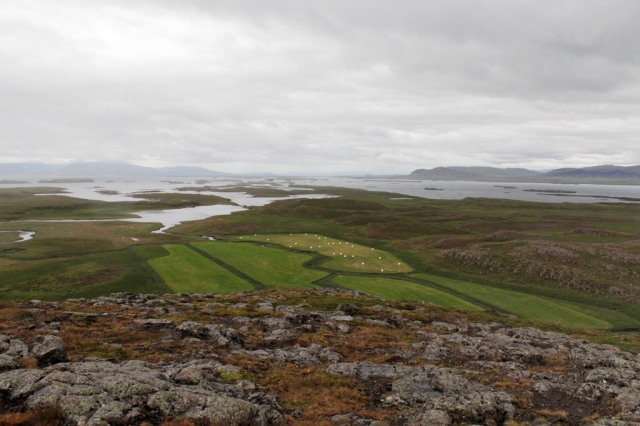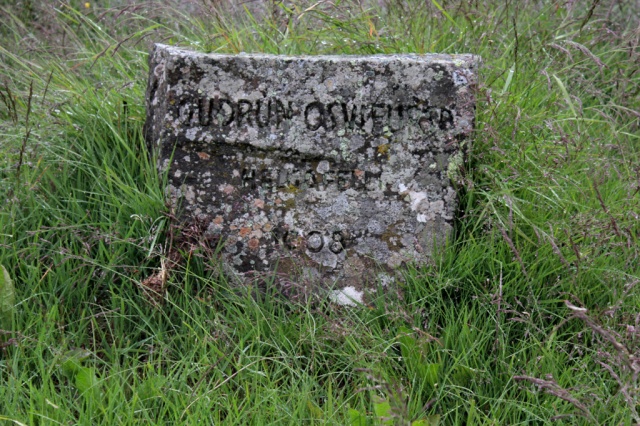As I settle in on my Icelandair flight from Reykjavik on my final journey home, I am happily surprised to discover a new series on the in-flight entertainment system (watching tv while flying is peculiar pleasure for me.) It wouldn’t take much for a Saga enthusiast like me to get excited by the very notion of such a documentary series but the lively intro to Ferðalok (or Journey’s End in English) provides a compelling contrast to most other historical documentaries. The gripping musical score immediately transported me into a world of stunning Icelandic characters captured with hip cinematography, where sweeping views of the Saga landscapes provide the setting for reenactments of events we may have read and imagined but have never witnessed with such vividness.
Produced in Iceland, Ferðalok endeavors to compare the literal events of the Sagas with contemporary archeological research and interpretation. By exploring how the Sagas can be directly linked with a tangible environment, this new mini-series will undoubtedly reawaken an interest in these old heroic stories, which have defined the culture of a nation where almost all of the citizens can retrace their family lineage back to the first settlers.
Besides being fashionable and entertaining, Ferðalok is smart. Combining English and Icelandic narration, the program is written and hosted by the young and stylish lady archeologist Vala Gardarsdottir, who guides the spectator to various significant Saga sites and discusses the course of events and their analysis with other professionals in the field. The on site archeological explorations are assembled with reenactment scenes of the Sagas and studio interviews with even more experts who provide a vast spectrum of scientific, literary and sociological interpretation.
As of yet, six episodes have been released. Without going into too much detail about each one, I will disclose what is predicable: half of the episodes deal with the Islanders’ favourite – Njal’s Saga. Granted this story has been deemed to be the most sophisticated in terms of its narrative complexity and style of writing, I hope that a continuation of the series will move on to look at events from the less popular Sagas. I am however very pleased that episode 3 was dedicated to examining the persona of Auð the Deep Minded, the most prominent woman of the settlement age. Auð was not only the leader of one of the most successful settlement expeditions, but she is mostly known as a historical figure rather than a Saga character – her character positions the series smack in the middle of a world which oscillates between history and mythology, archeology and storytelling.
Although it is not necessary to read the sagas before viewing Ferðalok, I highly recommend it to feel like a participant in unraveling these stories.
View the trailer here but note that the musical score of the trailer is outdated and differs from that of the show, which was a change for the better.

I photographed this Njal’s Saga site in 2011 – the infamous hillside of which Gunnar of Hlidarendi says “lovely is the hillside – never has it seemed so lovely to me as now, with its pale fields and mown meadows, and I will ride back home and not leave.” Episode 2 of Ferðalok features this consequential scene that leads to the demise of a beloved Saga hero.





